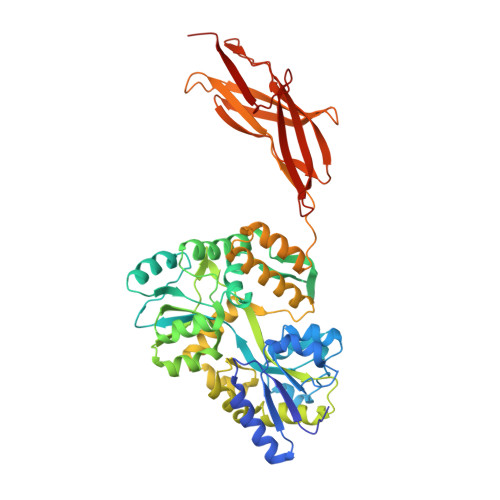Engineering a Lys-Asn isopeptide bond into an immunoglobulin-like protein domain enhances its stability.
Kwon, H., Young, P.G., Squire, C.J., Baker, E.N.(2017) Sci Rep 7: 42753-42753
- PubMed: 28202898
- DOI: https://doi.org/10.1038/srep42753
- Primary Citation of Related Structures:
5TTD - PubMed Abstract:
The overall stability of globular protein structures is marginal, a balance between large numbers of stabilizing non-covalent interactions and a destabilizing entropic term. Higher stability can be engineered by introduction of disulfide bonds, provided the redox environment is controlled. The discovery of stabilizing isopeptide bond crosslinks, formed spontaneously between lysine and asparagine (or aspartic acid) side chains in certain bacterial cell-surface proteins suggests that such bonds could be introduced by protein engineering as an alternative protein stabilization strategy. We report the first example of an isopeptide bond engineered de novo into an immunoglobulin-like protein, the minor pilin FctB from Streptococcus pyogenes. Four mutations were sufficient; lysine, asparagine and glutamic acid residues were introduced for the bond-forming reaction, with a fourth Val/Phe mutation to help steer the lysine side chain into position. The spontaneously-formed isopeptide bond was confirmed by mass spectrometry and X-ray crystallography, and was shown to increase the thermal stability by 10 °C compared with the wild type protein. This novel method for increasing the stability of IgG-like proteins has potential to be adopted by the field of antibody engineering, which share similar β-clasp Ig-type domains.
- Maurice Wilkins Centre for Molecular Biodiscovery and School of Biological Sciences, University of Auckland, Private Bag 92019, Auckland, New Zealand.
Organizational Affiliation:



















